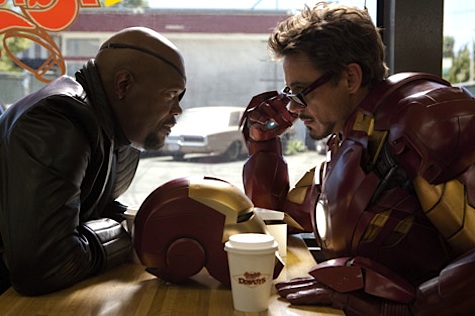The forthcoming movie Avengers movie, the summer’s big kick-off superhero blockbuster, is the culmination of five superhero films released over the past four years, all of them set within the same universe. But if you’re not familiar with the comics world these characters stem from, you may not know that.
Don’t panic! The good news is that you don’t need to see the five previous films to get the full Avengers experience. But if you want to afterwards, I’ll illustrate below how The Avengers has been quietly (and rather brilliantly) building to a head since 2008.
No spoilers ahead for The Avengers. Mild to large spoilers for the others.
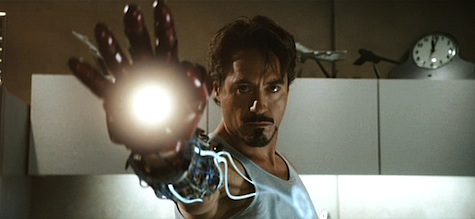
Iron Man (2008)
This is where it all begins. Apart from the obvious fact that this is the (surprisingly hilarious) origin story for Tony Stark/Iron Man, a central character in The Avengers, the film drops three, possibly four hints that there is far more to come past the events of Iron Man.
1.) Agent Coulson & S.H.I.E.L.D. This minor character pops up in three or four scenes to meekly prompt Tony Stark to brief the government on this new Iron Man technology. (Well, we think it’s the government anyway. The name Coulson gives for his employing organization is so long that Tony quips, “You should get a better name.” Later in the film, we find it’s been acronymed to just “SHIELD.”) Coulson himself proves extremely capable against the film’s villain, employing nothing more than a gun and general sneakiness. By the end of the film you’re definitely keeping an eye on him.
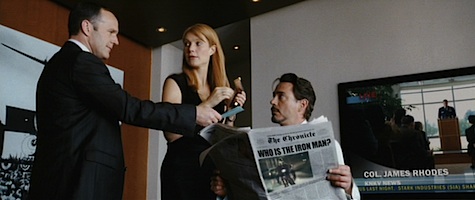
How this figures in to The Avengers: SHIELD is the organization that, basically, assembles the Avengers. They become more of a presence in later films. Agent Coulson himself is a character in The Avengers, and has become a fan favorite.
2.) Jarvis. Jarvis is Tony Stark’s personal A.I. assistant and a bit of a pet project for the machinist/arms dealer/futurist technocrat. He initially just runs Tony’s house and office, but is patched into the Iron Man suit later on. He’s effete, British, and highly competent. Tony talks to him quite a lot.
How this figures in to The Avengers: In the comics, Jarvis was the super team’s human butler and general keeper of all Avengers secrets. In the movies, he’s part of the Iron Man suit, so he’ll most likely serve the same function.
3.) Post-credit scene with Nick Fury. The ending of Iron Man involves a big fight and a big revelation: Tony Stark is Iron Man. In a post-credits scene, Tony Stark comes home after this announcement to find a trench-coated stranger with an eye patch waiting for him. The stranger razzes Tony a little about playing superhero, then turns around. Comic fans in the audience gasp as they recognize Nick Fury, the leader of SHIELD, then go absolutely bonkers as Fury ends the scene with the line, “I’m here to talk to you about the Avenger Initiative.”
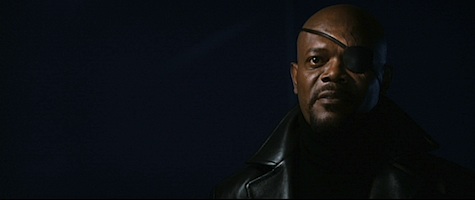
For many of us, this was the first indication that these films would be tied together into one universe, something that is rote in comics but has never been tried in the movies before.
How this figures in to The Avengers: This is the keystone moment. The guy with the eyepatch that you see in the posters for The Avengers is Nick Fury. And he’s played by Samuel L. Jackson because he is a total bad-ass. This is the only man in the world that could bring a group of alpha-level superheroes together.
4. What’s that shield doing on your desk?. Sharp-eyed viewers caught Captain America’s iconic shield under construction on Tony Stark’s work bench during one scene in the movie.
How this figures in to The Avengers: It might not figure in at all. The shield was mostly an Easter Egg for comics fans to find, as the movie timeline doesn’t match up just yet. Tony doesn’t know about the Avengers until the very, very end of the film, so there’s no reason for him to be constructing a replica of Captain America’s shield. This comes up again in Iron Man 2.

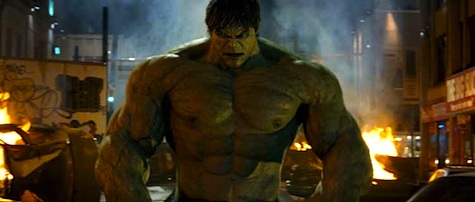
The Incredible Hulk (2008)
There’s a good chance you never saw this film. It was an attempt to begin a Hulk movie series again after the false start of the 2003 Hulk film, but the 2008 film ended up being a false start in and of itself. The film only really drops one big Avengers hint. And even with that it wasn’t certain the Hulk would show up in The Avengers movie at all, as Edward Norton, the actor playing him in this particular film, didn’t sign on to the blockbuster.
1.) Hulk hide from humanity! This isn’t really a hint, more of a statement of the Hulk’s general state. Bruce Banner, the scientist who turns into the Hulk, can’t control his transformations and seems to go back and forth in regards to how lucid he is while he’s the Hulk. Because of this, he tends to stay far, far away from any kind of settlement to avoid accidentally killing anyone.
How this figures in to The Avengers: This plays into a scene in The Avengers.
2.) You have an unusual problem. In a post-credits sequence, Tony Stark surprises the army general who’s been going after the Hulk (and the audience) by striding up to him in a bar and letting him know that he can help with “an unusual problem.” Tony drops that he knows the Hulk was the result of a restart of the Super Soldier Program, a keyword that will figure in later, and, vaguely, that they’re putting a team together.
How this figures in to The Avengers: At the time, this was mostly reassurance that The Incredible Hulk was a part of the Avengers narrative, and that one could trace the Hulk’s superpowered origins all the way back to the 1940s, and people who we’ll see in Captain America.
3.) A shield in the snow. A deleted scene. A deleted scene from The Incredible Hulk was meant to show the Hulk bounding through an ice field. It was strongly hinted that this was where Captain America would be found.
How this figures in to The Avengers: It doesn’t here, as this concept was recycled in the later Captain America film, although the idea that the Hulk tromping mindlessly through an ice field causes the world’s first superhero to be found is nicely poetic.
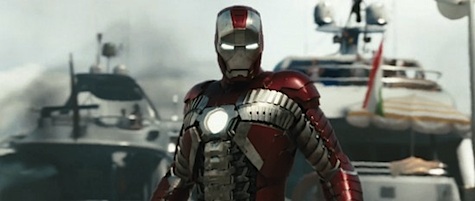
Iron Man 2 (2010)
The sequel to Iron Man finds Tony Stark and Iron Man as a known worldwide phenomenon. This is the movie where the concept of “the Avengers” becomes openly apparent. Several scenes add a new layer of complexity to the building mythology of superheroes in the Avengers universe.
1.) Hammer Industries. Stark Enterprises’ main competitor in the arms field is Hammer Industries, led by the maliciously nerdy and terribly inept Justin Hammer. In Iron Man 2 we see footage of Iron Man replica suits that Hammer has been working on, and we see the shoddy results of this later on in the movie. The implication here is contextual. Combat in the 21st century will be carried out by people with abilities we could only conceive of in comic books.
How this figures in to The Avengers: It doesn’t figure in directly, but it does get you familiar with the concept of entire platoons of superpowered people, both heroic and villainous.
2.) Howard Stark. Tony Stark’s father Howard, the founder of Stark Enterprises, plays a much larger role in Iron Man 2 despite being deceased. We see Howard in old footage where he’s addressing his son, and we see the legacy he left behind to the world in regards to scientific progress and the celebration of scientific progress. This is mostly notably symbolized by the Stark Expo, a World’s Fair-type celebration that Tony revitalizes in the beginning of the movie. The original Stark Expo ends up holding a huge secret for Tony (and for science, really), and we find out later that another superhero can trace his origins to that very same site.
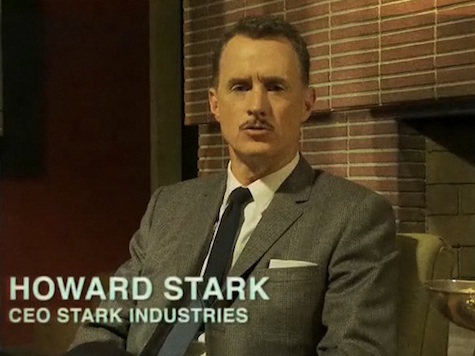
How this figures in to The Avengers: Like Hammer Industries, Howard Stark’s story adds context to the Avengers universe. This is where you begin to find out that the exceptional intelligence, technology, and heroism of the Avengers is the culmination of generations worth of work and advancement, and not just a collection of random super-people.
3.) SHIELD house arrest. After Tony gets drunk and starts fighting in his Iron Man suit at a party, he’s placed under house arrest by SHIELD (enforced by a returning Agent Coulson, who gets in some really good cracks at Tony’s expense). The house arrest has a two-fold purpose, however, as Nick Fury illustrates when he brings Tony some of his father Howard’s effects. Through this we find out how Howard helped implement an early version of SHIELD, and Tony finds out just how much like his father he really is.
We, and Agent Coulson, also find out Tony has been re-constructing Captain America’s shield. Although here it’s only used to prop up some hardware.
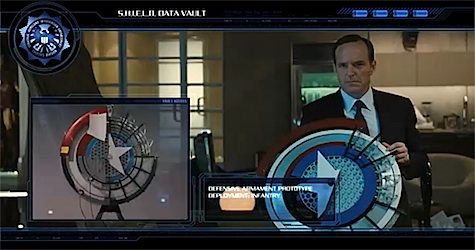
Fury and Stark also have a disdainful chat about the “Avengers Initiative” in pieces throughout the movie. Stark is critical of the idea, thinking it childish, and Fury deflects him by outright telling Tony that he’s too childish to even be considered for the Avengers. He can certainly help them, but he can’t be one. The implication being that Tony is not quite the son Howard Stark expected him to be.
How this figures in to The Avengers: Fury and Stark are obviously the coordinating and support system for the Avengers team, and this is the first time we see them working together in an Avengers-related context. It also makes it clearer that Tony is being groomed for a larger role in the affairs of, well, the world.
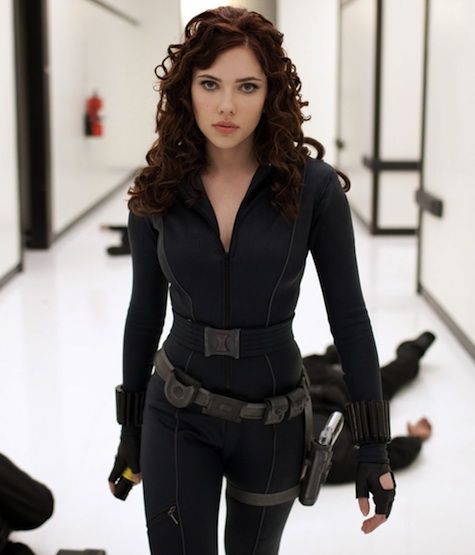
4.) Black Widow. In place of Agent Coulson, this film introduces another agent of SHIELD to shadow Tony, Natasha Romanov, who we later find out is a master assassin that goes by the name of Black Widow. (Did you see her butt?)
How this figures in to The Avengers: Black Widow is a central character in The Avengers and this is where she’s introduced. We still don’t know a lot about her origin, although it’s clear that she doesn’t have any supernormal abilities. She’s just very, very capable. Seriously, she’ll kill you.
5.) By the hammer of Thor. All the post-credits scenes in these movies are Avengers-related and this one is no different. In this one a black sedan makes its way to a crater in New Mexico. The door opens to reveal Agent Coulson, who opens his phone and simply utters, “Sir, we found it.” What did they find? A godly hammer stuck in the middle of the crater.
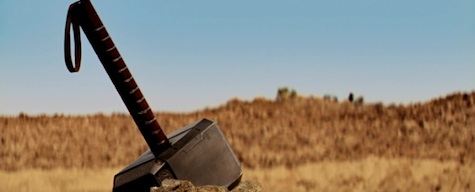
How this figures in to The Avengers: Thor, the god of Thunder, has arrived on Earth. And luckily we don’t have to wait long to see how and why it happened.
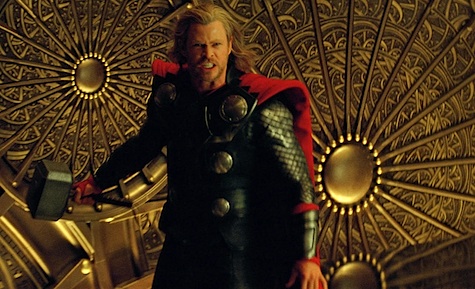
Thor (2011)
The build up to The Avengers begins in earnest with this movie, which was the summer superhero kick-off blockbuster this time last year. Of all the individual movies introducing the members of the Avengers, Thor was the hardest one to pull off. The story of a Thunder God come down to Earth from a heavenly fantasy kingdom is a hard sell, even if it fits the basic epic fantasy tropes, and it’s even harder to merge that with the origin stories of the other members of the Avengers, which are science fiction-based. We thought it pulled it off very well, though, and we can’t wait to see Thor’s return in The Avengers.
1.) Loki: A threat too big to handle alone. Thor introduces the concept of Asgard, a magical kingdom straight out of high fantasy and Norse mythology. Everything about this place, and the nine realms it’s attached to—including one packed to the brim with giants and goblins—is larger than life. Here, Thor is a god of thunder who wields a magic hammer. He has battle-hungry friends with similarly insane abilities, a father who is the ultimate god of Asgard, and a conniving trickster god of a half-brother, Loki, who’s goal is to snatch the throne of Asgard for himself. (He also sports a spectacular helmet. Really.)
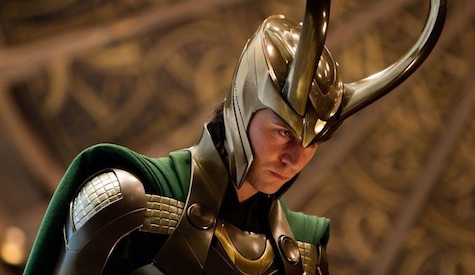
How this figures in to The Avengers: Loki is the main villain in Avengers and after failing to hold the throne of Asgard, Earth must seem like easy pickings. There are no gods defending it, after all!
We’ve also seen glimpses of goblins and giants in the Avengers trailer, along with even more terrifying beasts of myth. Of the kind that only appear to herald the end of the world and which wouldn’t look out of place in Asgard.
2.) Hawkeye. At one point in Thor, the god is cast down to Earth and separated from his hammer. He fights through a SHIELD complex to reach it and goes up against Hawkeye, a master archer and another central member of the Avengers. This is his first appearance.
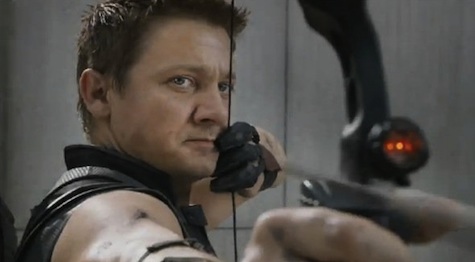
Thor also runs into Agent Coulson in the film, and promises to aid SHIELD in defense of the Earthly realm.
How this figures in to The Avengers: Pretty straightforwardly. Thor needs a reason to come back and Hawkeye is the last member of the Avengers that needs to be introduced, as the upcoming Captain America film won’t be able to cameo anyone in the modern day.
3.) A power greater than even Asgard. The post credit scene for this movie involves one of the scientists featured in Thor being hauled in by Nick Fury to investigate a small glowing cube. “What is it?” asks the scientist. “Power,” Fury answers, and in the glass behind them Loki suddenly walks in. The trickster god smiles and utters, “Well I guess that’s worth a look.” The scientist looks at Fury, smiles, and utters the same line.
How this figures in to The Avengers: Expect this to be the all-powerful Maguffin that Loki is striving for in The Avengers. Just what is this very cosmic-ish cube? We’ll find out….
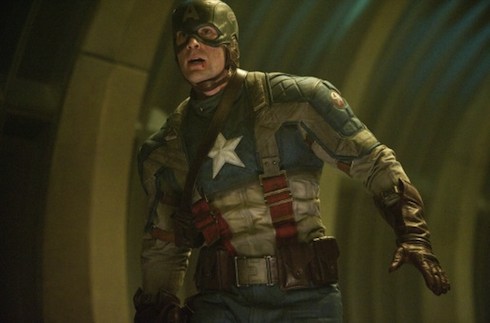
Captain America: The First Avenger (2011)
This is the final movie released before The Avengers and it’s basically what it says on the tin. Here, now, we see the missing throughline of history that leads to the formation of the Avengers.
This movie is the exception to the others on this list. While they largely stand alone as their own stories, Captain America functions as a prequel to The Avengers. Pretty much everything in this film figures into the larger mythology, so we’ll just highlight the big parts.
1.) The prologue. The opening scene of Captain America takes place in modern day, with SHIELD investigating the icy ruin of a crashed plane for the aforeseen cube from Thor. This is where they stumble upon Captain America, frozen in ice for over 60 years. This is the re-used concept from the deleted scene from The Incredible Hulk.
How this figures in to The Avengers: Captain America is the core of the Avengers. He’s their general, their leader, and the ideal superhero. And this is how he survived to present day. By the end of the movie we’ll find out how he got trapped in Arctic ice.
2.) Hydra, the Red Skull, and the Super Soldier program. Hydra, a thinly-disguised version of the Nazi SS, are led by the Red Skull, a man who gained incredible strength and reflexes after downing an experimental super-soldier serum. (Later perfected and used on Steve Rogers to create Captain America.) But also? Lost his entire face. And this is Hugo Weaving playing him, so that is a terrible face to lose, you know.
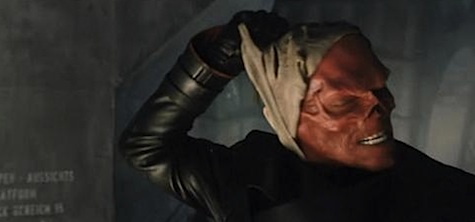
How this figures in to The Avengers: Red Skull and Captain America were the first superhumans in history and represent the beginning of the “arms race” that results in entire teams of superpowered individuals coming together in the 21st century. The Hulk and Iron Man can trace their origins back to these men. There’s a reason they subtitled the film “The First Avenger.” (Well, a reason beyond wanting to tone down the aggresive pro-American stance.)
3.) Howard Stark. A young Howard Stark figures very prominently in this movie. He’s so prevalent, and so dashing and proactive, that he’d be the hero of the film if Captain America weren’t in it. (Well, actually, Peggy would. TEAM PEGGY! But you know what I mean.) He develops the tech that allows Steve Rogers to become Captain America, and it’s at the original World Fair that Rogers is first noticed by Stark and his Super Soldier program cronies.
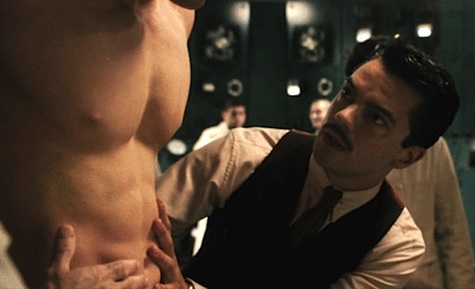
How this figures in to The Avengers: Nothing beyond what we already know, although Captain America goes way out of its way to characterize Howard Stark and show us a courageously noble side of him that his son Tony never got to see.
4.) Asgard and the cube. Remember the cube? The all-powerful Maguffin? The Red Skull has it by the end of the movie and it’s there we see a hint of its power. I say a hint because the damn thing is so powerful that it ends up opening a portal to Asgard and either melting the Red Skull or ejecting him into a dimensionless void. It’s a vague death.
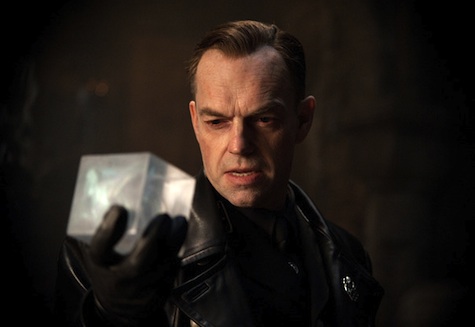
How this figures in to The Avengers: We get more background on the Maguffin that Loki will probably be destroying half of New York City to find in The Avengers.
5.) The epilogue. After Cap fights the Red Skull, the plane they’re on crashes into the Arctic. Cap suddenly wakes up in a 1940s hospital room, with an old-timey radio playing. A nurse walks in and he asks what has happened, etc., and on account of the fact that he’s not an idiot he works out that he’s being held in some weird complex.
Cap busts out of the SHIELD complex and makes a daring escape into… the streets of modern day Times Square, which stops him cold. A fleet of black sedans rushes up to him and out steps Nick Fury, who lets him know that he has 60 years to catch up on. Cap gets the SADDEST LOOK on his face, says an utterly heartbreaking line, and the movie ends.

And that’s it! (He said, 3000 words later.) As you’ve read, the mythology behind The Avengers is fascinating for those who wish to discover it, but not necessary for those who don’t. As a comic book reader, I’ve been completely thrilled with how the movies have been slowly been building the backstory to what is sure to be an epic blow-out. It’s intellectually satisfying to see a format used so often in the comics be utilized to such an effective extreme in a film format. The actors going into a debut vehicle like The Avengers have had a lot of time to perfect their characters, give them shading and personal quirks that would otherwise not be present in an initial film.
Marvel spent a lot of money and many years making an Avengers movie that is multi-faceted and plausible, and I’m astounded by that alone. The cast and filmmakers behind that movie will make it fun, but all the tiny mentions and mythology I’ve listed above makes it rich and engaging. The same thing that makes comic books so damned addictive is now up there, on the screen.
Chris Lough is the production manager of Tor.com and wrote this article while flying over the western half of the U.S. for the first time in his life. Like one does.










